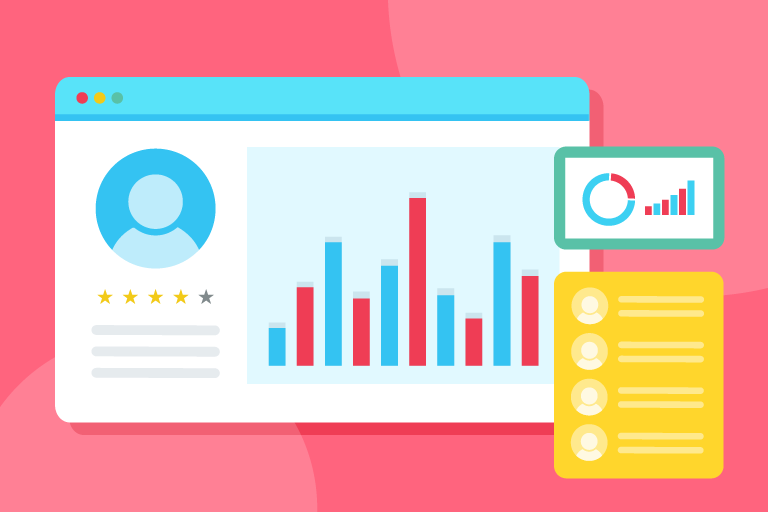Customer data powers the ultimate customer experience. Seems obvious, right? We have so much information at our fingertips—birthdays, purchase history, location, etc. How could we, as marketers, not take advantage of this wealth of information? What we’ve learned, however, is that it’s not that brands don’t want to activate their customer data, but they don’t know how.
The challenge many brands today face is connecting the available data to the marketing channels being used to reach customers. This gap—the Activation Gap—leads to disjointed, clunky experiences that result in frustration for both the marketer, and the customer. How frustrating is it when you, as a customer, create a cart on your mobile device and, when you log in on a desktop computer, your cart is empty? How annoying is it when you, as a marketer, have duplicate email addresses for the same customer on multiple email lists but can’t sift through your lists cleanly to find the repeats?
The Activation Gap is not only frustrating, it’s costly. It can lead to wasted funds, poor customer retention, burned-out teams, and higher churn rates. For example, according to Forrester, marketers spend 32% of their time managing data quality.
To create a seamless, cross-channel customer experience, brands need to build a bridge between their data and their marketing channels to create a holistic view of each individual customer. Let’s focus on how data can help build better, deeper connections.
Collecting Customer Data
We mentioned the sheer volume of data that brands collect from customer interactions. But how is it collected? With increasing privacy concerns, the way companies collect customer data is evolving. Brands should strive to empower customers to own their own data and how it’s distributed.
For example, with the deprecation of third-party cookies, brands are starting to heavily rely on first- and zero-party data—data collected from websites customers visit or directly from the customers themselves. First-party data is collected when a customer visits a brand’s site, their activity on the site is implicitly collected (we’re all too familiar with those “accept all cookies” pop-ups). Zero-party data, in contrast, is collected from the customer through surveys, customer service chats, and reviews.
Storing Data
Once the data is collected, it needs to live somewhere that can be easily accessed. Having all customer data in a single location creates a single source of truth for all of the information being used to power product, sales, and marketing platforms. Using a cloud data warehouse is a modern solution for consolidating customer data in a more affordable, more flexible way. By separating the computing from the storing, cloud data warehouses make it easier to access data.
Accessing Data
Accessing customer data is where reverse ETL platforms, like one of our partners, Hightouch, come into play. But first, let’s rewind a bit and review ETL platforms. ETL platforms are data-centric platforms—ETL actually stands for “extract, transform, and load.” According to Google Cloud, ETL platforms are “a traditionally accepted way for organizations to combine data from multiple systems into a single database, data store, data warehouse, or data lake.“
Reverse ETL platforms “[copy] data from your central data warehouse to your operational tools, including but not limited to SaaS tools used for growth, marketing, sales, and support.” So, instead of extracting, transforming, and loading data into the warehouse, the reverse ETL process loads, transforms, and extracts data.
This transformation and extraction makes reverse ETL more effective for real-time communications—a key ingredient for activating customer data.
Activating Data
Activating customer data is all about using the data you have stored in your data warehouse to communicate with customers in ways that resonate with them. This is where a customer communication platform, like Iterable, metaphorically “enters the chat.”
Through a live-sync, the data is constantly updated and extracted from the data warehouse and can then be used to create real-time automated customer journeys and messaging that’s triggered based on customer actions. This is how brands can create individualized customer communications—there’s data attributed to individual user IDs and each user has unique interactions with your brand.
For example, if one customer opens your promotional email and makes a purchase, they may be sent an SMS confirming their order. But, if another customer gets the same promotional email and a week passes without them opening it, instead of sending a transactional SMS message, you could send a follow-up email that includes a deeper discount. The interactions—or lack of—are stored as customer data that helps you send more relevant, personalized messages going forward.
Embracing Customer Data to Uplevel the Experience
Every customer interaction is the opportunity to collect information. From every clicked CTA to every abandoned cart, each action provides insight into how that individual customer engages with your brand.
That being said, collecting customer data shouldn’t be the end-all-be-all for your brand. Yes, data is gold for marketers but it’s because of the possibilities created by this data. The goal is to take that data that is collected and bridge the activation gap to create unforgettable customer experiences on an individual level. Once you’ve embraced the opportunities data can provide, you can deliver customer joy.
To learn more about how Iterable can help your brand activate customer data, schedule a demo today.
































